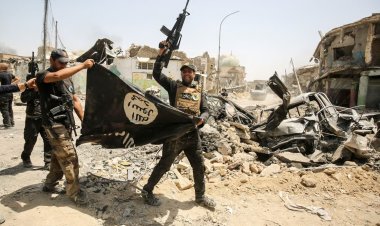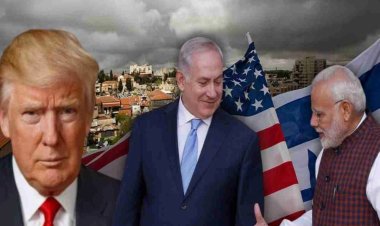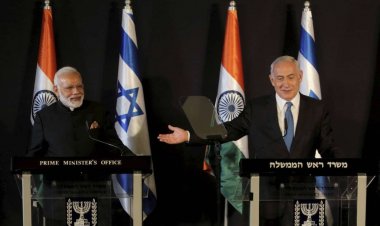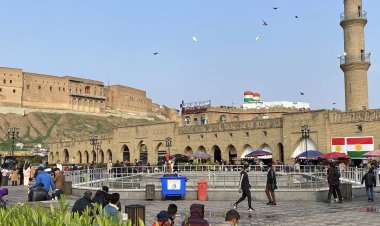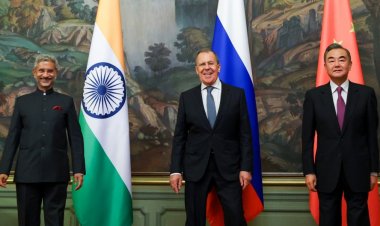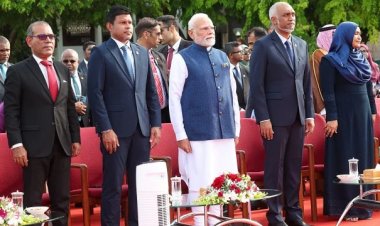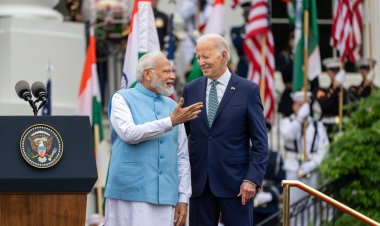International Law in Conflict Zones: Revisiting the UN Genocide Convention
The explainer discusses the UN Genocide Convention, states responsibility and examples of Genocide over the years. It further discusses India and its response towards the Convention. It also explains what are the issues with the convention.
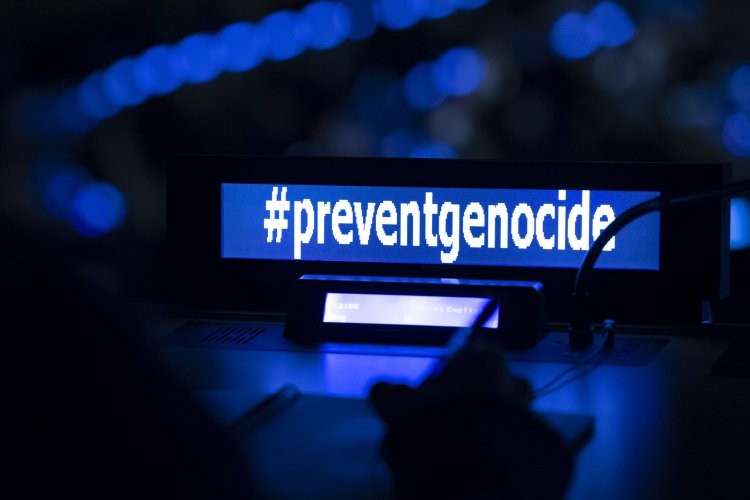
Explainer
By Shivani Pandey
As allegations of ethnic cleansing amidst the Ukraine-Russia, Israel-Palestine and Armenia-Azerbaijan conflicts emerge, the international community is once again reminded of the vitality of confirming to international laws to secure justice, establish peace, and protect human rights. The Convention on the Prevention and Punishment of the Crime of Genocide is one such bulwark that not just strengthens the rules-based order, but in essence safeguards humanity at its core.
Genesis of the term “Genocide”
The term Genocide was first used by Raphael Lemkin in his book Axis Rule in Occupied Europe (1944). He described it as the “destruction of a nation or an ethnic group.” According to him, genocide is a two-pronged strategy. First, is to cease the ‘national character’ of a particular group and alienate them from the rest of the nation. The second step is to attack them mentally, physically and in other ways to destroy their distinct identity and impose on them features that confirm to national pattern. The term was developed in the aftermath of the Armenian genocide, the Simele Massacre, and the Holocaust.
In the legal sphere, genocide was first used in the Nuremberg Indictment, the trial held by the International Military Tribunal established by the Allies to prosecute the Axis powers for their crimes against humanity during the Second World War. The indictment stated that the Third Reich had engaged in a “systematic genocide” against ethnic groups, by murderous extermination, elimination, and suppression of these groups. Later, it was recognised as a crime in international law by the United Nations in 1946 and formally codified into the convention in 1948.
About the Convention
Also known as the Genocide Convention, it is one of the first human rights treaties that was adopted by the United Nations. Recognizing the need for an overarching framework to induce responsibility amongst state actors, the Convention in its preamble acknowledges that in “all periods of history genocide has inflicted great losses on humanity, and being convinced that, in order to liberate mankind from such an odious scourge, international co-operation is required.”
The convention was adopted by the UNGA on 9th December 1948 and entered into force on 12th January 1951 with 153 parties (as of April 2022, Zambia is the latest member), signifying the conviction of the international community to “never-again” witness the injustice and wrongs committed during the Holocaust. There are 41 members of the United Nations that are yet to ratify or accede to the convention. These include: Japan, Bhutan, Indonesia, Qatar, Thailand, Turkmenistan, Mauritius, Kenya, Congo, South Sudan, among others.
Articles on Genocide:
Article 1: Parties confirm that genocide, whether committed in time of peace or in war, is a crime under international Law.
Article 2: Genocide means (a) killing, (b) causing bodily or mental harm, (c) deliberately inflicting conditions of life that bring physical destruction, (d) imposing measures to prevent birth, (e) forcibly transferring children of a group to another group; committed with intent to destroy a national, ethnical, racial, or religious group.
Article 3: Acts punishable are – (a) genocide, (b) conspiracy to commit genocide, (c) direct and public incitement to commit genocide (d) attempt to commit genocide (e) complicity in genocide.
Articles on States’ Responsibility:
Article 4: Persons who committed acts under Article 3, shall be punished even if they are constitutionally responsible individuals (rulers, public officials).
Article 5: Contracting Parties will enact necessary legislation to give effect to the provisions of the Convention and provide penalties for persons guilty of genocide.
Article 6: There shall be a competent tribunal of a State in the territory of which the genocide is committed to try persons charged with genocide. An international penal tribunal may also have jurisdiction to try, provided the States have accepted its jurisdiction.
Article 7: Contracting Party pledges to grant extradition when charged with genocide.
Article 8: Contracting Party may call upon any organs of the UN to act under its Charter for the prevention and suppression of acts of genocide.
Over the years
Rwanda Genocide: The Rwanda population in 1994 (7 million) comprised 85% Hutus, 14% Tutsis and 1% Kwas. Even before the colonial era, though Hutus were the majority, Tutsis occupied higher positions in the social strata. Later, during decolonisation ethnic tensions began brewing and the Hutu political movement gained momentum. By 1980s over 480,000 Rwandans became refugees and in 1994, a systemised genocide against Tutsis was administered. According to the UN, more than one million people have died and an estimated 250,000 women were raped. In 1994, the International Criminal Tribunal for Rwanda was established that indicted 93 individuals as violators of international law, including the former Prime Minister Jean Kambanda.
Bosnian Genocide: The Bosnia and Herzegovina Republic in 1991, under former Yugoslavia, constituted a population of 4 million with 3 main ethnicities: Bosniak (44%, Bosnian Muslim), Serb (31%) and Croat (17%), the remaining were Yugoslavs (8%). The declaration of Bosnian independence and creation of a nation that would majorly comprise Bosniaks led to opposition by the Bosnian Serbs. A military campaign to cleanse Bosnian Muslim civilians was started and between 1992-95, 100,000 people were killed, 80% of them were Bosniaks. The UN war crime court in The Hague sentenced Radovan Karadzic, Bosnian Serb leader and Ratko Mladic, former military commander, to life imprisonment.
Darfur Genocide: The genocide against black African tribes in Darfur, Sudan started in 2003 when the tribal population revolted against their Arab-dominated government. The government armed Arab militias that disproportionately attacked black African civilians. It is estimated that 170,000 people have died, majorly on account of hunger and disease. Oman Bashir, Sudan’s former Head of State was charged with genocide. But even after the ouster of Bashir, war crimes continue to take place against the black Africans in Sudan by the Rapid Support Forces (RSF) (paramilitary formed by the Arab militia Janjaweed).
Rohingya Genocide: Rohingyas are an ethnic minority community in the Rakhine State of Myanmar. Having their own language and culture, distinct from the predominantly Buddhist country, the government of Myanmar regards them as illegal immigrants. The UN Secretary-General Antonio Guterres called them as one of, if not “the most discriminated people in the world.” While they have been forcibly migrating to other regions for decades, their major exodus began in 2017. A case against the Myanmar government was brought to the ICJ by Gambia in 2019, alleging the breach of the Convention. The ICC is also investigating genocide crimes executed by individuals in Myanmar. Both the cases are still ongoing.
India and the Genocide Convention
India is a signatory to the 1948 Convention and had ratified it on 27th August 1959. However, there is exclusive legislation on crimes of genocide. In 2022, in a parliamentary question in Rajya Sabha, information was sought with regards to India’s legal stance on genocide. Busting concerns about the lack of a legislation, the Minister of State in the Ministry of Home Affairs answered that, being a signatory to the 1948 Convention, India recognizes genocide as an international crime and the principles enshrined in the Convention are already a part of India’s Common Law. The Indian Penal Code and the Criminal Procedure Code both codify penalties for individuals who are guilty of such crimes.
However, this lack of legislation has been subject to criticism on various grounds. The specific protections given to public servants from prosecution under section 197 of CrPC violates Article 4 of the Convention. Also, there are no specific provisions in the Indian Penal Code that criminalize specific acts of bodily or mental harm against a particular ethnic or religious minority to destroy the community, contravening Article 5 of the Convention. Further, there are no objective rules on the establishment of an investigating authority or a tribunal to adjudge allegations of genocide as provided for under Article 6.
Issues with the Convention:
As the convention completed 75 years of its adoption in 2023, there are certain issues and lacunae that continue to undermine its potential efficacy. Firstly, the Convention fails to criminalise acts of genocide committed by the government. As per Articles 4 to 7, state parties are merely required to enact legislations to allow for conviction of genocide, set up tribunal, and allow for extradition of individuals indicted of such crimes. It does not include the complicity of the government as an element of the crime. However, crimes such as genocide cannot be considered an “international crime” without a certain degree of involvement of the state.
Moreover, the language of the Convention is criticized as being vague. For instance, the use of acts committed that cause “serious…mental harm to members of the group.” There is ambiguity on what constitutes perpetration of mental harm. Additionally, the Convention omits “political groups” from the category of targeted groups under genocide. The groups protected within the Convention are limited to ethnic, religious, and racial communities. The omission of the state as perpetrators and political groups as victims, in essence, excludes the crimes instituted by the State against a group of people on account of their political beliefs and ideology. Also, with the rise of authoritarian states that contest the legitimacy of international laws, enforcement of edicts and judgments under the Convention continues to be a challenge.
Way Forward
Genocide, today, has been acknowledged as the worst of the worst crimes and the “ultimate crime” against humanity. It is regarded as jus cogens in international law, that is a law or treaty from which no deviation is allowed. The Genocide Convention veils a two-fold ambition, prevention of and punishment for genocide. However, as is evident by history, it has failed to secure the former. Today, various allegations of genocide have been raised against State parties, viz. Russia’s war crimes in the Ukraine conflict, China’s actions against Uyghur, Armenian genocide by Azerbaijan. Responsibility to Protect (R2P) has been recognized as a critical measure to cease genocide in civil war conflict zones. However, given the criticism of humanitarian interventions, such measures come with collateral losses and damage to the perception of international organizations.
A three-pronged strategy can be adopted in dealing with cases of genocide. Firstly, there is a need to institute confidence-building measures in war-torn societies by providing humanitarian aid, rescue, and rehabilitation. The second step should involve negotiations and peace accords between parties involved, arbitrated by an independent third party on neutral grounds. These agreements should provide for a mutual understanding on sentencing of perpetrators of genocide. And lastly, the sentencing and judicial processes in international organizations like the International Court of Justice (ICJ) and the International Criminal Court (ICC) should be expedited immediately. With speculations of an end to liberal-order and the depreciating legitimacy of international norms, the international community is tasked with the responsibility of rebuilding faith in global institutions to not just safeguard global economy and development, but to ensure lasting peace and justice to humanity.
Disclaimer: This paper is the author's individual scholastic contribution and does not necessarily reflect the organization's viewpoint.

